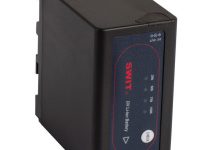John Lennon once said “A mistake is only an error, it becomes a mistake when you fail to correct it”. Fortunately for us, we live in the computer age where almost anything can be undone, and we can repeat our mistakes over and over again until we finally learn from them.
There are a lot of misconceptions about what Log footage is, what it is used for, and how to get the most out of it. With so many content creators rushing to make comparison videos between cameras, Gerald Undone noticed that they were all basically making the same mistake: only applying contrast and saturation in their color grades.
Since most people consider this to be a ‘quick grade’, Gerald Undone is hoping to undo that logic and help explain the the basics on working with log and linear footage in grading, and how to get an accurate final image.
Log Vs Linear
The DSC Labs ChromaDuMonde chart is a very useful tool for evaluating accuracy while grading log footage.
The center 2 rows with 11 steps of brightness crisscross to form an X pattern in the scopes on DaVinci Resolve that assist the colorist to allow them to determine how even the light values are in the image to bring the log gamma back to a linear spec.
When content creators add contrast and saturation to their log footage, this is what they’re trying to achieve. However, if you were to film linear in-camera, the image would have less dynamic range.
Not all logs are the same, even the ones created by the same manufacturer. Clog1 is drastically different from Clog2, and the same goes for every variation of Slog, etc.
These settings were all intended to be exposed within their respective exposure values. Though some shooters often prefer to expose 1 stop over or so, this is actually incorrect and it creates an uneven exposure that reduces the full potential for dynamic range.
The Problem with Contrast
If you think of contrast as just pushing the exposure values away from the middle of the spectrum and your exposure was already incorrect to begin with, all you’re doing is increasing the distance between exposure steps. You’re aim is to create nice, smooth gradation steps to bring that log footage back to a linear profile.
In DaVinci Resolve, you can adjust where the distance between the exposure steps are by using the Pivot tool.
The pivot tool shifts the center point of the spectrum up or down, allowing you to determine which end of the exposure gets more or less information, the shadows or the highlights.
Understanding Tonality and Luminance
Your goal as a colorist is to provide the most information possible for the areas of the image that matter, which is usually the face and skin tones.
By only adding contrast and saturation to an image, you aren’t pivoting the values and centering them over the skin tones of the subject. This limits luminance and tonal gradations and makes the image less natural and less pleasing to the viewer.
Gerald is using a DSC Labs ChromaDumonde chart for these examples because the chart represents all of the values you could capture with a camera that has 11 stops of dynamic range.
Applying LUTs to Footage
Most of us know how to apply LUTs to footage, but the intention of those LUTs is to bring footage ‘back’ to a linear format as a last or second to last step in the color grading process.
To do this correctly, the footage HAS to be exposed to the appropriate values set by the creator of that specific LUT. IE, Slog3 has to be exposure to 41% middle grey for Sony’s Slog3toRec709 LUT.
There are a slew of LUTs available on the internet and their exposure settings are determine by the creator with the intention of bring the image back to linear with the correct, even steps between exposure stops.
Some of those want the shooter to overexpose and some of them require underexposure, but the image must be exposed accurately for them to work correctly.
Why Quick Grades Aren’t Accurate
Quick grades merely accentuate the log aspect of the image and don’t correct it to display linear, even steps between values. So when a reviewer does a ‘quick grade’ by adding contrast and saturation, they are just comparing a skewed image from two completely different cameras that are incorrectly set.
Essentially, comparing Slog3 to Clog2 and not the actual cameras themselves.
So How Do You Do It Right?
Gerald does a fantastic job explaining his process of setting values correctly, and I highly recommend you watch his video, twice. For me to regurgitate it for you here would only be to muddle it up with my own understandings of how to grade footage, but I can tell you how I do a quick grade, more quickly.
I’m lazy, so when I shoot I prefer to shoot in raw. I always set my exposure and white balance with a light meter. Lately, I’ve been using the Lumu Power 2. I always film a chart at the beginning of every setup too.
You might think that this doesn’t sound very lazy, but I haven’t gotten to the lazy part just yet. In DaVinci Resolve, my first step is to use the Color Match tool. This allows me to quickly apply a fairly accurate, even grade across all of my footage with little to no effort. As long as I film a chart between every location, lighting, lens, and settings change, I have reasonable confidence that my colors and exposure steps are fairly correct – or at least correct enough for a client who didn’t put a final grade into the budget.
Ensuring that your colors are accurate, and your exposure is set to the manufacturers specs is the only way to get the most potential out of the image you are capturing with your camera. If you’re filming in Log, be sure to read all of the best practices for exposing with the specific LUT you intended to apply at the end of your grade.
[source: Gerald Undone]
Disclaimer: As an Amazon Associate partner and participant in B&H and Adorama Affiliate programmes, we earn a small comission from each purchase made through the affiliate links listed above at no additional cost to you.
Claim your copy of DAVINCI RESOLVE - SIMPLIFIED COURSE with 50% off! Get Instant Access!





